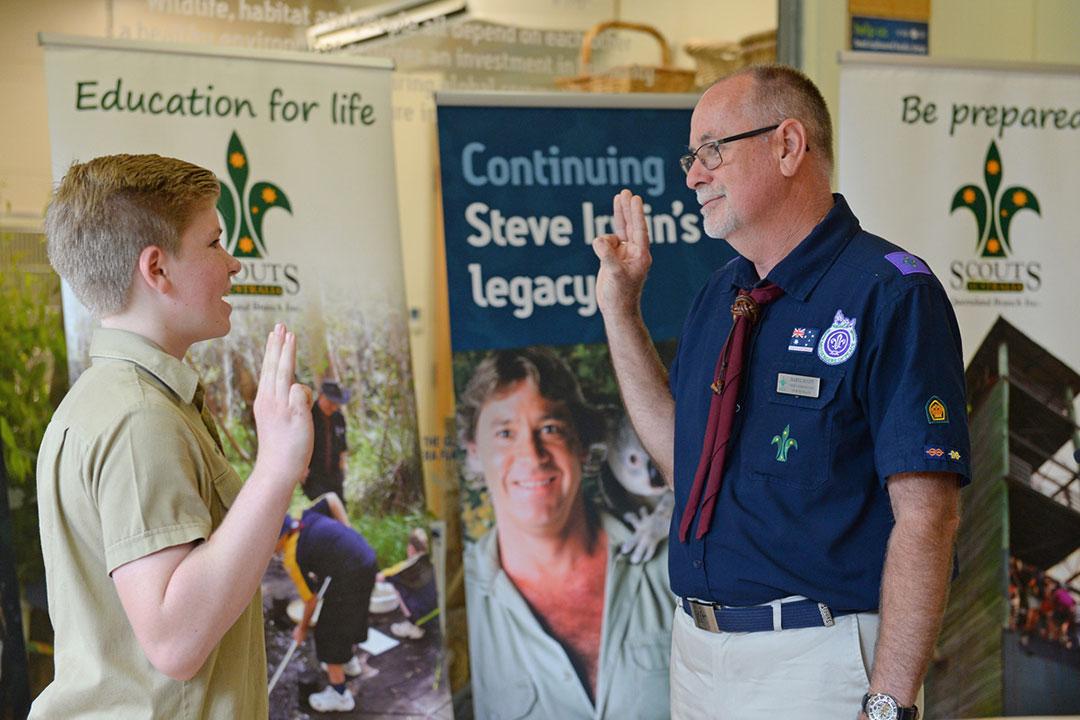History of Scouting
Scouts Founded
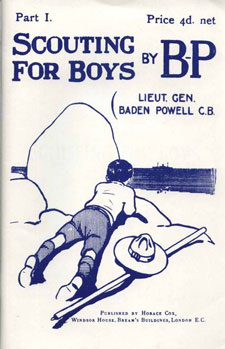
Scouting in Queensland
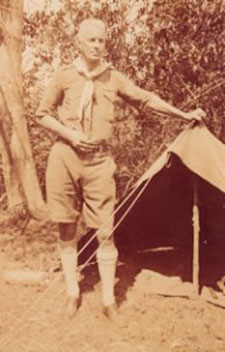 Photograph of Charles Snow
Photograph of Charles Snow
Early Development
Major Changes
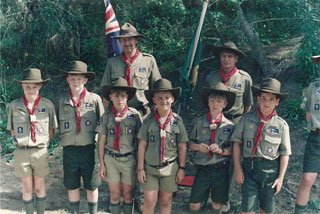 Major changes happened in 1972 in response to the recommendations of the Design for Tomorrow Committee. Among the changes, the Australian Boy Scouts Association became the Scout Association of Australia. Uniforms changed – no sock tops, garter tabs or metal buttons. Cubs now wore a green hat with yellow band and khaki uniforms replaced the gray and navy blue. The Promise and Law also changed, and the World Badge became the Membership Badge, replacing the Tenderfoot Badge for Scouts, Venturers and Rovers and the Tenderpad Badge for Cubs. Wolf Cubs became Cubs, but the ages stayed basically the same. Boomerang tests at 3 levels replaced the “Eyes”. Link Badges were introduced to facilitate the transition from one Section to the next. A new Award Scheme for Scouts was introduced in 1973, with Pioneer, Explorer and Adventurer Target Badges replacing the Second Class and First Class badges. The Scoutcraft Badge was introduced in 1979 to teach basic Scouting skills that had become lost and was a precursor to doing the Target badges. The Venturer Award Scheme now consisted of two badges, Venturer Award and Queen’s Scout Award, with a third badge – Major Interest – for those with a specialised interest. In 1977 a new Award Scheme was introduced for Rovers with the Baden-Powell Award becoming the pinnacle of the section.
Major changes happened in 1972 in response to the recommendations of the Design for Tomorrow Committee. Among the changes, the Australian Boy Scouts Association became the Scout Association of Australia. Uniforms changed – no sock tops, garter tabs or metal buttons. Cubs now wore a green hat with yellow band and khaki uniforms replaced the gray and navy blue. The Promise and Law also changed, and the World Badge became the Membership Badge, replacing the Tenderfoot Badge for Scouts, Venturers and Rovers and the Tenderpad Badge for Cubs. Wolf Cubs became Cubs, but the ages stayed basically the same. Boomerang tests at 3 levels replaced the “Eyes”. Link Badges were introduced to facilitate the transition from one Section to the next. A new Award Scheme for Scouts was introduced in 1973, with Pioneer, Explorer and Adventurer Target Badges replacing the Second Class and First Class badges. The Scoutcraft Badge was introduced in 1979 to teach basic Scouting skills that had become lost and was a precursor to doing the Target badges. The Venturer Award Scheme now consisted of two badges, Venturer Award and Queen’s Scout Award, with a third badge – Major Interest – for those with a specialised interest. In 1977 a new Award Scheme was introduced for Rovers with the Baden-Powell Award becoming the pinnacle of the section. Girls in Scouting
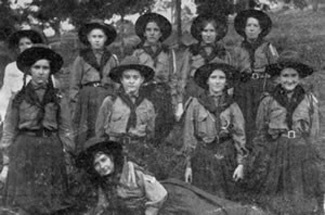 In 1919, some girls wanting to be Girl Scouts approached Miss Marjorie Grimes of Tarragindi. She formed a Troop with the help of Scoutmaster Alan B Cribb of 1st Ipswich. As had happened in England, girls in Scouts met with disapproval and it was eventually suggested that they become Girl Guides. The Tarragindi Girl Scouts became Queensland’s first Girl Guides on 20th April 1920. These intrepid girls, however, were not the first girls in Queensland to try Scouting. The League of Girl Aids began in March 1910. They wore the Scout uniform with a skirt and their handbook was “Scouting for Boys”. It would not be until 1975 that girls were allowed to be Rovers. Despite much opposition to young ladies joining Rovers, a trial Rover Crew was set up at Baden-Powell Park, Samford, and attached to Branch Headquarters. The girls eventually joined pre-existing Crews. Scouting admitted girls and young women to its Venturer Scout and Rover Scout Sections in 1975 and its Cub Scout and Scout Sections in 1988.
In 1919, some girls wanting to be Girl Scouts approached Miss Marjorie Grimes of Tarragindi. She formed a Troop with the help of Scoutmaster Alan B Cribb of 1st Ipswich. As had happened in England, girls in Scouts met with disapproval and it was eventually suggested that they become Girl Guides. The Tarragindi Girl Scouts became Queensland’s first Girl Guides on 20th April 1920. These intrepid girls, however, were not the first girls in Queensland to try Scouting. The League of Girl Aids began in March 1910. They wore the Scout uniform with a skirt and their handbook was “Scouting for Boys”. It would not be until 1975 that girls were allowed to be Rovers. Despite much opposition to young ladies joining Rovers, a trial Rover Crew was set up at Baden-Powell Park, Samford, and attached to Branch Headquarters. The girls eventually joined pre-existing Crews. Scouting admitted girls and young women to its Venturer Scout and Rover Scout Sections in 1975 and its Cub Scout and Scout Sections in 1988. Scouts Now
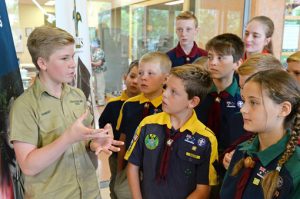 In 2004, the Scout uniform changed again moving to a new navy uniform to replace the traditional khaki, which caused quite a controversy. The new uniform was voted on by all the States and Territories and the move was seen as a way of modernising the movement, getting away from the military look and, hopefully, attracting new members. This is a journey that has taken over 100 years and is still evolving. There have been many changes along the way, the introduction of new Sections, changes in uniforms and Award Schemes. Despite all the changes, this journey still carries on the Aim of the Scout Movement and the principles as identified by our Founder, Lord Baden-Powell, that man should serve God, act in consideration of the needs of others and use his abilities to the betterment of himself, his family and the community in which he lives.
In 2004, the Scout uniform changed again moving to a new navy uniform to replace the traditional khaki, which caused quite a controversy. The new uniform was voted on by all the States and Territories and the move was seen as a way of modernising the movement, getting away from the military look and, hopefully, attracting new members. This is a journey that has taken over 100 years and is still evolving. There have been many changes along the way, the introduction of new Sections, changes in uniforms and Award Schemes. Despite all the changes, this journey still carries on the Aim of the Scout Movement and the principles as identified by our Founder, Lord Baden-Powell, that man should serve God, act in consideration of the needs of others and use his abilities to the betterment of himself, his family and the community in which he lives. Scout Memorabilia
Scouts Qld’s Heritage team are happy to accept Scouting memorabilia from the many Scouting journeys. It assists if you can provide as much details as possible with the items eg: Names, dates and places on old photos helps with cataloging and display opportunities please contact Branch Commissioner (Heritage)
Famous Scouts
These prominent Aussies have all been influenced by Scouting – Robert Irwin (Scouts Qld’s Ambassador), Dick Smith AO, Peter Beattie, Rove McManus, Peter Garrett, Sir Jack Brabham, Jamie Durie, Shane Jacobson, Bert Newton, Adam Spencer, Regan Harrison, Tim Jarvis, Brendan Nelson, Manfred Cross AM, Paul Gockel, Sir Hubert Wilkins, Dick Smith OA and David Parkin, 2018 Comm Games – Decathlon – Bronze Medalist – Cedric Dubler – St Johns Wood Scout
These wonderful people were or are current Scouts – Sir Richard Branson, Bill Gates, David Beckham, Venus Williams, Mariah Cary, Neil Armstrong, Sir Paul McCartney, Billy Connolly, Harrison Ford, Celine Dion, Barack Obama, Michael Jordan, Steven Spielberg, Patrick Stewart, Bear Grylls, Michael J Fox, Sir David Attenborough, Tony Blair, Michael Parkinson, David Bowie, Jaime Oliver, Ashton Kutcher, Kieran Ault-Connell, Russell Brand and Andrew Murray.
